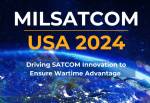Zero road fatalities is a goal for legislators, automotive suppliers, and original equipment manufacturers. To achieve this, major automotive companies are exploring autonomous driving technologies to complement their vehicle lineups’ active safety portfolios.Our research found that the advanced driver assistance systems (ADAS) market is witnessing rapid growth in terms of technology, particularly in the developed markets of North America, China, and Europe. Most manufacturers, suppliers, and technology providers are charting a path toward full automation.
While current ADAS systems provide Levels 0 through 2 autonomy, with capabilities such as adaptive cruise control, lane departure warning systems, blind spot detection, and alerts for drowsy drivers, many companies are seeking to achieve higher levels of autonomy that minimize the need for driver oversight. Today’s systems primarily use radar or cameras that perceive surroundings to improve navigation, though each has inherent limitations: radar can perceive objects in ranges of up to 300 meters but cannot distinguish between pedestrian positions (e.g., crossing a road versus walking on a sidewalk) or various modes of transportation (e.g., motorcycles, trucks, buses, bikes, or commercial vehicles); although camera systems rectify this issue, rain, snow, and clouds can reduce their range from 200 meters to less than 50 meters.
Manufacturers are continuing their pursuit of the best sensor combination for their automated driving programs; offering only a camera, radar, and a few ultrasonic sensors is no longer sufficient. The recent introduction of the far superior light detection and ranging (LiDAR) sensors is another step toward highly intelligent autonomous or self-driving cars in which driver input becomes secondary to the vehicle’s perception of the road ahead.
Although LIDAR has better performance ratings than other ADAS sensors, it is expensive. We note that smaller and more affordable LiDAR sensors are needed in this growing market. Together with camera and radar, LiDAR will be a core technology in providing 360-degree view to enhance safety.
The Frost Radar reveals the market positioning of companies in an industry using their Growth and Innovation scores as highlighted in the Frost Radar methodology. The document presents competitive profiles on each of the companies in the Frost Radar based on their strengths, opportunities, and a small discussion on their positioning. We analyze hundreds of companies in the industry and benchmarks them across 10 criteria on the Frost Radar, where the leading companies in the industry are then positioned. Industry leaders on both the Growth and Innovation indices are recognized as best practice recipients.




